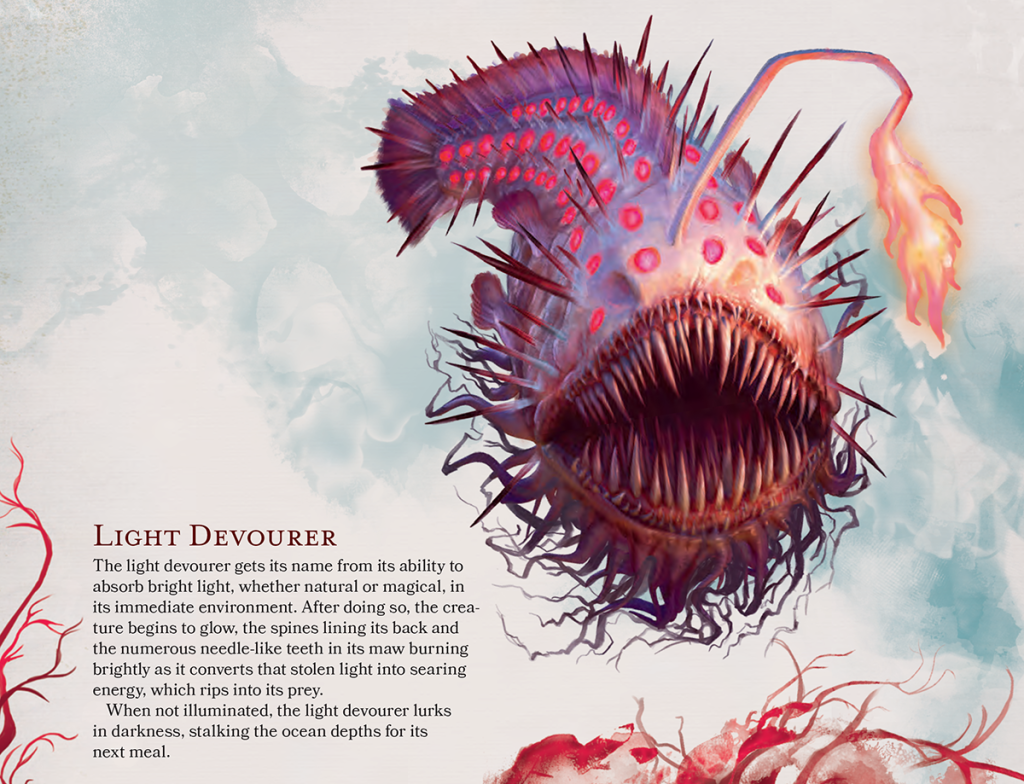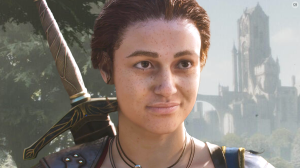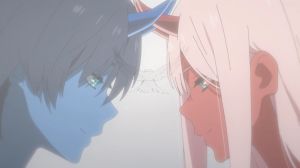Dungeons & Dragons’ next adventure provides players with a very different kind of adventure. Later this month, Wizards of the Coast will release Critical Role: Call of the Netherdeep, a new full-length adventure set in the Critical Role campaign setting of Marquet. A major part of the new adventure involves the Netherdeep, a strange underwater region filled with malevolent creatures warped by….something that can be found deep within its waters.
Videos by ComicBook.com
To get a sense of what players might face in the Netherdeep, Wizards of the Coast provided ComicBook.com with an exclusive look at parts of Call of the Netherdeep’s Underwater Bestiary, with three monsters (and their descriptions) shown off below. Additionally, ComicBook.com also had the opportunity to sit down with D&D Lead Story Designer Chris Perkins about the new book, how it differs from other adventures published by Wizards of the Coast, and what sort of creatures can be found in the book that surprised even him.

ComicBook.com: Regarding the Underwater Bestiary found in Call of the Netherdeep, were there any sort of guiding principles or themes that the design team tried to follow when you were creating these new monsters?
Chris Perkins: Good question. I should preface this with a quick note. This product had three leads. I was one of them, but Matt Mercer and Joey Haeck were the other two. Unlike most products that I’m involved with, I didn’t steer this one creatively as much as I typically do. All of the story beats and big plot points, and settings were all created by Matt Mercer, and he basically handed off his outline and all of his notes to Joey. The two of them executed on the story, fleshed out the locations and created the monster bestiary with their freelance writers.
All of that was just dropped on my desk and they basically said, “Here, make this into a book please.” Which is kind of what I did. So, I was very much on the backend process. That’s not to say I didn’t approve the outline, and I wasn’t involved in the story stuff, but I just wanted to make that clear. You’re talking to the guy who basically did the ass end of the project.
So, what I got from Matt and Joey was this collection of monsters tied to this very rich location, which we did talk about extensively, in the beginning of the process. The Netherdeep itself had to be more than just a simple underwater environment, it needed something else going on. Matt built this idea that there is this powerful entity who has been trapped for millennia and the Netherdeep has just formed around it. Because this creature is being tortured in its own prison, that sense of imprisonment and that sense of being isolated and torn had to be reinforced in the Netherdeep. Because the Netherdeep is an expression of this creature’s psyche. So what does that mean for all the creatures that haunt it?
They can’t just look like normal underwater creatures. There needs to be something twisted and malevolent about it. That was really the design direction. We looked at deep sea creatures as a reference and then looked at what can we do to them to heighten or exaggerate qualities that reinforce the story that we’re trying to tell, and this location that we’re trying to bring to life.
So, you might find a monster that looks like a big scary jellyfish, but it’s also a jellyfish that can petrify you. That’s not normal. Then, we made sure that each of these creatures had a distinctive silhouette, or a distinctive profile. This one is sort of eel-like, this one is shark-like, just so we get some variety.

Not to delve too deeply into spoilers here, but you’re talking this entity that is imprisoned within the Netherdeep and how it’s almost manipulating its environment. That sounds very Demon Lord-esque, or a bit like the Ancient Dragons established in Fizban’s Treasury of Dragons. Is it fair to say that’s a similar concept there?
Yeah, I think so. The great mystery, and I’m not really spoiling anything here, is that you don’t know what is in the Netherdeep. We want imaginations to run rampant. We want the players to speculate. Is the thing like a Demon Lord? Or is it like something else?
Of course, the answer is it’s not like anything we’ve done in a Fifth Edition adventure before, but the players don’t know that. One of the great things about the adventure is that it makes the players wait a bit before they can really get a handle on what the Netherdeep is, and what it represents, and what’s down there.
When talking about the bestiary, the Netherdeep, and this idea of the great unknown possible threat – at the root of all of this is that most humans on some primal level are terrified by things they can’t see. In deep underwater environments, it’s particularly terrifying, because visibility is limited, it’s cold, it’s lonely, it’s isolating. This is a place where terror is easy to evoke. I think one of the goals of the bestiary, was just to tap into that primal fear.
So, you’ve designed hundreds of D&D adventures dating back to First Edition. How does designing an underwater monster made for underwater combat, how does that differ from something that players might fight on the land, or they might fight in the skies? How does the very nature of this creature being underwater, how does that change how these designs are approached?
That is a really good question. First of all, you have to be sure that when you’re designing these monsters, they’re capable of surviving in the environment in which you’re putting them. So they need certain traits so that these monsters could function in their environment. If those elements were missing, we had to add them in.
Now, some creatures, despite being underwater, basically function like creatures on land. Like one of the creatures in Call of the Netherdeep kind of looks like a crab. Now, it’s got some weird stuff going on, it’s got like a big snake tendril thing that comes out of its shell, but it walks around on the ground, and attacks in a kind of 2D environment.
With that monster, it’s not such a big deal. There’s no strain there because it’s basically functions like a creature on land that just happens to be in the water. But for other creatures that leverage the three-dimensionality of moving underwater, they may need traits that allow them to function in that 3D environment. The rules for visibility come into play, and we have to pay attention to that as well. Since visibility is greatly limited, creatures might need blindsight or some other means of being able to see and detect things in that environment for it to function effectively.
Another design decision was, and this is key to all adventures in the Fifth Edition line, we recognize that not everybody who picks up this book will necessarily run this adventure. But, we want the monsters to be portable into other settings. So, there were actually a few cases where the writers had, in the descriptions of the monsters, relegated them to the Netherdeep. We stripped that out, because we didn’t want any barrier that would prevent a DM from going, “Oh, you know what? I want to put sorrowfish in my home campaign, in my own underwater adventure.” We wanted these monsters to feel very at home in the Netherdeep, but the way that they’re presented and the descriptions that we provide, don’t limit them to that location. And that’s by design.

When you were given the manuscript to Call of the Netherdeep, were there any parts that made you say, “Wow, this is not something that I expected to see.”
That’s another good question. I’ve seen so much in D&D adventures, it is actually kind of rare for me to have that sort of reaction. But, there was one thing that jumped out at me. One of the main threats that you face when you hit the underwater part of the adventure is an aboleth. But, this aboleth, unlike any other aboleth I’ve seen, has a second face that has formed on its body, which has led it to believe that it has actually been transformed into another entity, a sort of godlike being. I had never seen anything quite that horrifying before, this two-faced aboleth who’s going through an identity crisis.
The adventure does a great job of sinking its teeth into that character. Because, in the chapter where you meet the aboleth, you get a fair amount of information as a DM for how you roleplay it. Aboleths can be a complex creature, but this one is just kind of warped. I can see DMs having a great deal of fun, bringing this kind of schizophrenic monster to life.
This is the second time that Wizards of the Coast has teamed up with Critical Role. Obviously, this line of books must be a success, because you guys keep working with them. Do you think that speaks to the role that Critical Role has played in building Fifth Edition’s popularity?
Oh yeah, absolutely. It’s sort of a divine partnership in my mind. I have not only great respect for Critical Role as a creative entity, but the folks at Critical Role are so passionate about the game and its power to bring people together, and to build lifelong friendships. So, any opportunity to be able to collaborate with them on something meaningful, is always a joy. The other thing is that these people are professionals. They have great fun doing what they do, but they treat their work very seriously, as do we.
But you are absolutely right, Critical Role has been a great way to bring new players into the hobby and it has really done a great job on that. The work that Matt does to bring his world to life is aspirational for so many people. These products can help show people what the possibilities are in a D&D game, how far can you stretch D&D, and do things that nobody has seen before. What creative pools can you play in?
So, the first product we did with them was a campaign setting – Explorer’s Guide to Wildemount. With the second product here, focusing on an adventure is a way to really, and this is a bad pun, go deep. While a campaign setting tries to cover a lot of areas to a certain shallow depth, here, we really get to dive in, and plunge into places, and give them a lush level of detail. Like the Netherdeep, I know Matt and I were super keen to do it because Fifth Edition didn’t really have an underwater experience.
Following up on that, do you feel that the Critical Role adventures have a different feel to them than the ones produced solely by Wizards of the Coast?
Yes, I think it does. One of the things that distinguishes it, is that similar to Critical Role’s campaign, it shows off Matt’s love for depth of character, and depth of character development. In a Wizards of the Coast adventure, we do focus on character to an extent. We try to round out our villains. But in a Critical Role adventure, I think you expect even more depth and more interaction between characters. So, a great deal of the writing of this product was focused on character development. How characters interact with others, how they discover things about themselves, the complexities of relationships, these are all elements that are really common characteristics in Matt’s campaign. I think they’re echoed here in the adventure.
Critical Role: Call of the Netherdeep will be released in the United States and most parts of the world on March 15th, and in Europe on April 5th.








